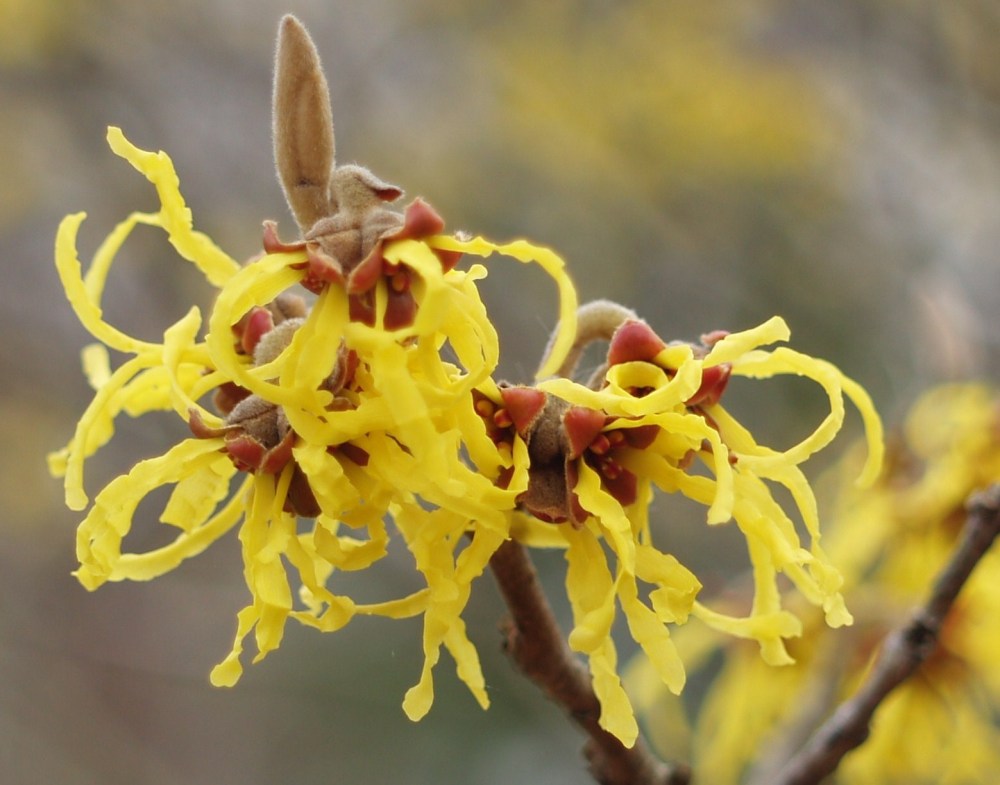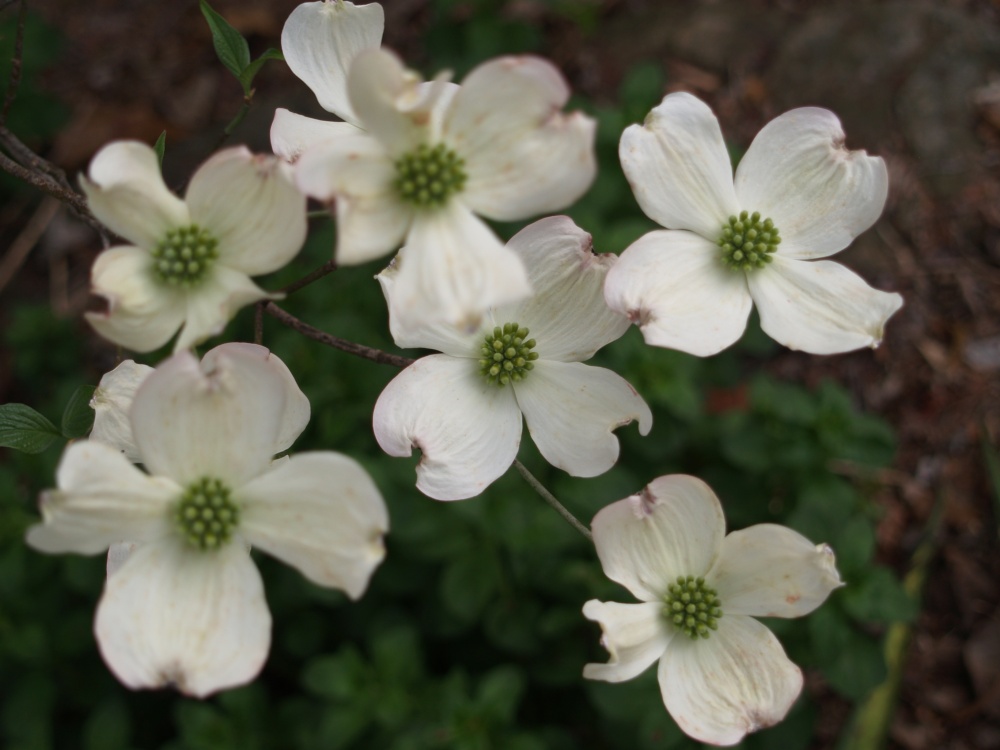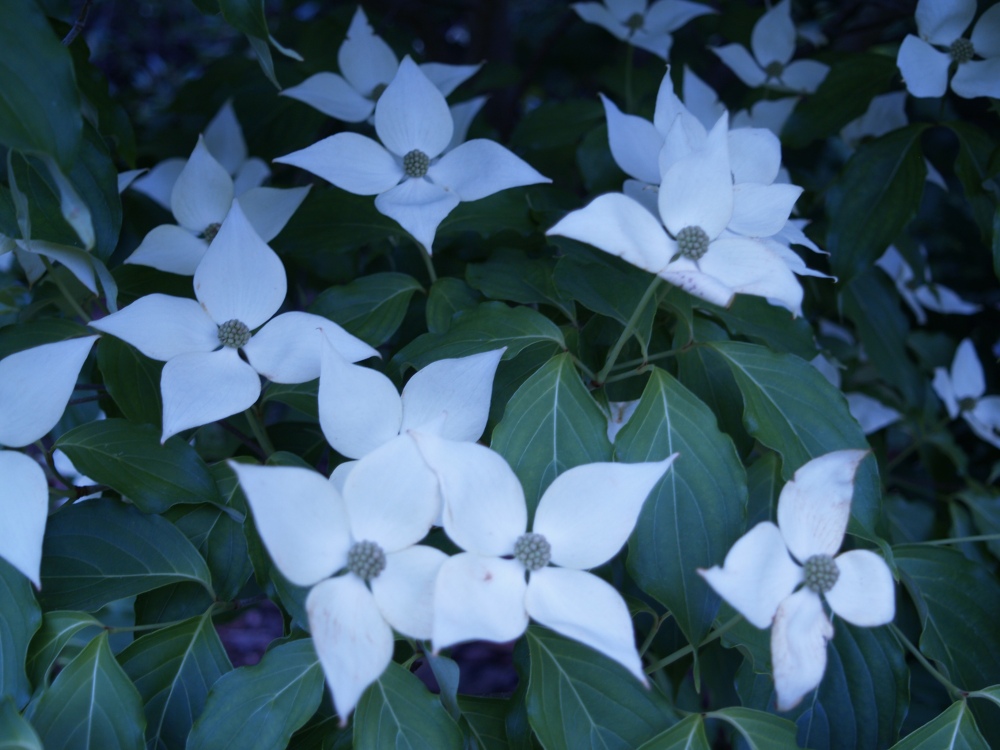The Vernal witch hazel (Hamamelis vernalis, below) is native to the United States, but not to Virginia or the mid-Atlantic region. Its native habitat is on moist, shaded banks of creeks and rivers in the southern half of the midsection of this country, though it is sturdy and dependable through most parts of the United States. Thus it is not considered a native plant in my garden, though its beauty and toughness make it an exceptional choice as a large shrub or small, multi trunked tree. The witch hazel requires no care at all, no fertilizing or supplemental irrigation, and it is resistant to insects and diseases.
In my garden I’ve planted Vernal witch hazel and red and yellow flowering hybrids (Hamamelis x intermedia ‘Diane’ – red and ‘Arnold’s Promise’ – yellow, below), but not the common witch hazel (Hamamelis virginiana) that is native to much of the eastern United States. Virginia witch hazel flowers in late autumn, but the small blooms are often obscured by the foliage, and it’s wide spreading form and size are not appropriate for my garden. With Vernal and hybrid witch hazels there will often be flowers in the garden from mid to late January into early March, and often these are the only blooms in the garden when the ground is snow covered.
The decision that I was confronted with in planting the Vernal witch hazel, and then the hybrids, was whether to choose strictly based upon whether the plant was native, or to select the one best suited to my garden. In this instance I chose the non-native, but through the same processes of researching the habitat and habit of plants I’ve planted many natives.
My garden is a hodgepodge of native and non-native trees, shrubs, and perennials with a sprinkling of tropicals sunk into the ground for the summer months. I suppose that I’ve planted nearly as many plants that are native to China and Japan as Virginia natives, and I love them all. When I’m interested in adding a plant to my garden I reference as much information about it as possible, including whether it is native to the mid-Atlantic region, but I’m not dissuaded if it’s from some other spot on the map, so long as it is suitable for my garden.
Whenever I get around to checking, I’m always surprised by the number of natives planted in the garden (when I bought on impulse without caring to check on habit or habitat), but there are just as many or more that aren’t. I don’t fault gardeners who insist on planting nothing but natives, though the definition of a native plant can be a bit complicated (and too lengthy to be considered today). I do mind that some hard core believers from one side or the other make claims that are misleading, or plain untrue.
The first thing to get out the way is that native plants are ugly. There’s no reason for this to be true any more than for any other geographical region on the planet, and in fact there are some marvelous plants to be found in our natives. The first trees I planted in my garden twenty some years ago were dogwoods, white and pink flowered selections of the dogwood that is native to most of the eastern United States. The dogwoods were followed by several native redbuds (Cercis canadensis), but at the same time I also planted a European purple leafed beech and the first Japanese maples that have grown to a collection of twenty three varieties.
There’s not a tree in the garden that I favor more than the native dogwood (Cornus florida, above), but I’ve also planted Chinese dogwoods (Cornus kousa, below) and hybrids that are crosses between the native, Pacific dogwood (Cornus nuttali), and Chinese dogwood. Some native plant enthusiasts will claim that natives are tough as nails, resistant to bugs and diseases and impervious to drought and flood, but the native dogwood is bothered by a host of issues and is far more fragile than the non-natives.
To my thinking the choice of plants should be guided more by suitability to the location in the garden than by whether a plant is native or not, but additional consideration should be given to include natives whenever possible. In every case, potentially invasive non-natives should not be planted, but in many areas with disturbed (non-native) conditions natives might not be the ideal choice. I hope that it’s obvious that the typical subdivision lot that has been stripped of trees and native topsoil bears little resemblance to the surrounding native forests and meadows. Finding a suitable native plant for these conditions could be a challenge, and perhaps a non-native will tolerate this environment more easily.
In my experience I’ve seen no evidence to support that non-native plants as a whole require more water than natives, or that they are less resistant to insects or diseases. There are some native plants that are encouraged because they provide habitat or food source for butterflies, or some other critter. For the gardener who is attentive to the needs of wildlife these are a must, but most gardeners should choose plants that meet the size and environmental requirements of the site first, with native or non-natives a secondary consideration.
I’ve counted more than forty native plant species in my garden, and in the next few weeks I’ll feature some of the best, starting with trees, then shrubs, and then on to perennials and vines. There are many that will be splendid additions to your garden.
Hooray! I”m hoping that I can extrapolate your finds into my garden a couple of hundred miles south of you. I’d love to do an ‘all native’ garden, even if it mean I miss out on some really great plants.
However, there will be a kousa dogwood in my yard, someday.
Thanks for your view on natives–can’t wait to hear more. I’m trying to add more to my garden, but do love many non-natives.
I’ve always lived among native dogwoods (Cornus florida) until moving to one of the typical subdivisions you describe. (Rumor has it all the topsoil here was removed and used to form a golf course in a nearby neighborhood.) Here there is one Cornus florida that for years I’ve been expecting to start behaving like a beautiful native dogwood, but it disappoints every spring. Fortunately they still grow on their own in the surrounding area!
Removal of non-compactable soils (topsoil) from building sites is a standard practice in developing many residential neighborhoods, but there’s no reason that dogwoods (or any other trees) can’t thrive in these conditions. The most common cause of tree failure (or failure to thrive) in my experience is planting trees too deep, and in clay or compacted soils the planting environment is often improved considerably by creating slightly raised beds to improve drainage.
Unfortunately, despite it’s beauty the native dogwood is vulnerable to a number of problems, and I’m likely to drone on far too long about this in the chapter.
I was aware natives would be no more hearty, but still a tad surprised when my Solomon’s seal was rapidly munched to the ground.
I don’t garden exclusively with natives, but I do have a native plant border in my yard, and I am trying to keep that section more or less native. Every time I look at the native witch hazel at the garden center, they end up talking me out of it for the reasons you mentioned. That Diana hybrid is so stunning in this area–I’ll probably have to give in. Is it as fragrant at the native species?
My fave native: Itea–it is a rock star!
I’m often surprised by unfounded arguments used to support planting native plants. I’ve seen it strongly implied that native plants are resistant to deer, but what did deer eat before non-natives were introduced? It’s obvious that there’s no correlation between deer and other critter resistance and the origin of habitat. The use of many native plants is encouraged as a food source for wildlife, though in gardens we rarely plant with the intention that a plant will soon be devoured by critters.
There are plenty of reasons to select native plants on their merits, such as your experience with the native itea (though it is likely that the itea you’ve planted is a selection and not a native by the strictest interpretations).
I’ve no argument with gardeners who plant only natives, and I’m happy to listen to well founded arguments that others should plant more. However, when selecting the most desirable plants for my garden I’ll choose the hybrid witch hazel with more conspicuous, but still fragrant blooms rather than the native.
Yes, the itea is selection (henry’s garnet and little david), so I’m obviously not much of a stickler. Glad to hear the hybrid witch hazel is fragrant!